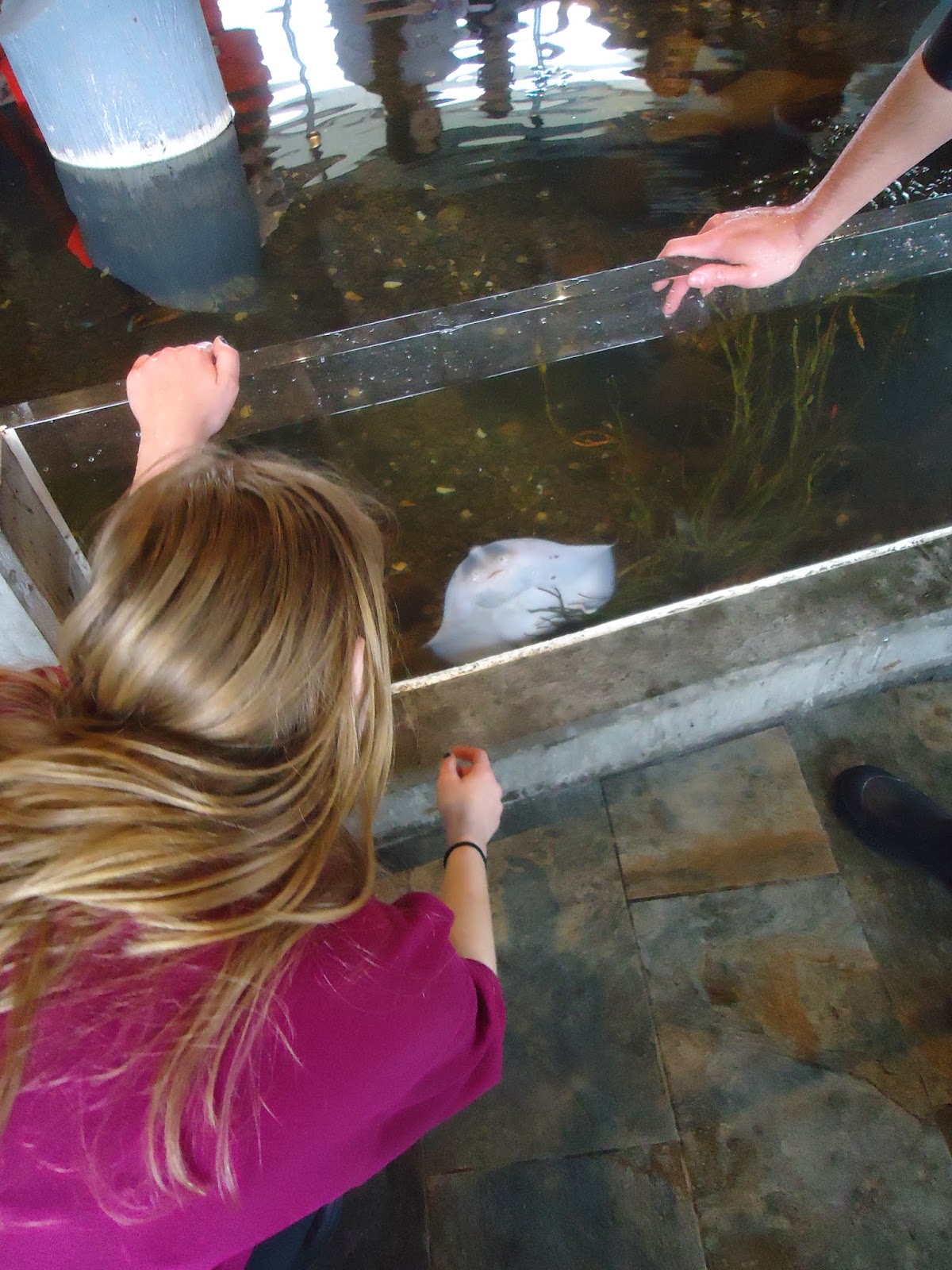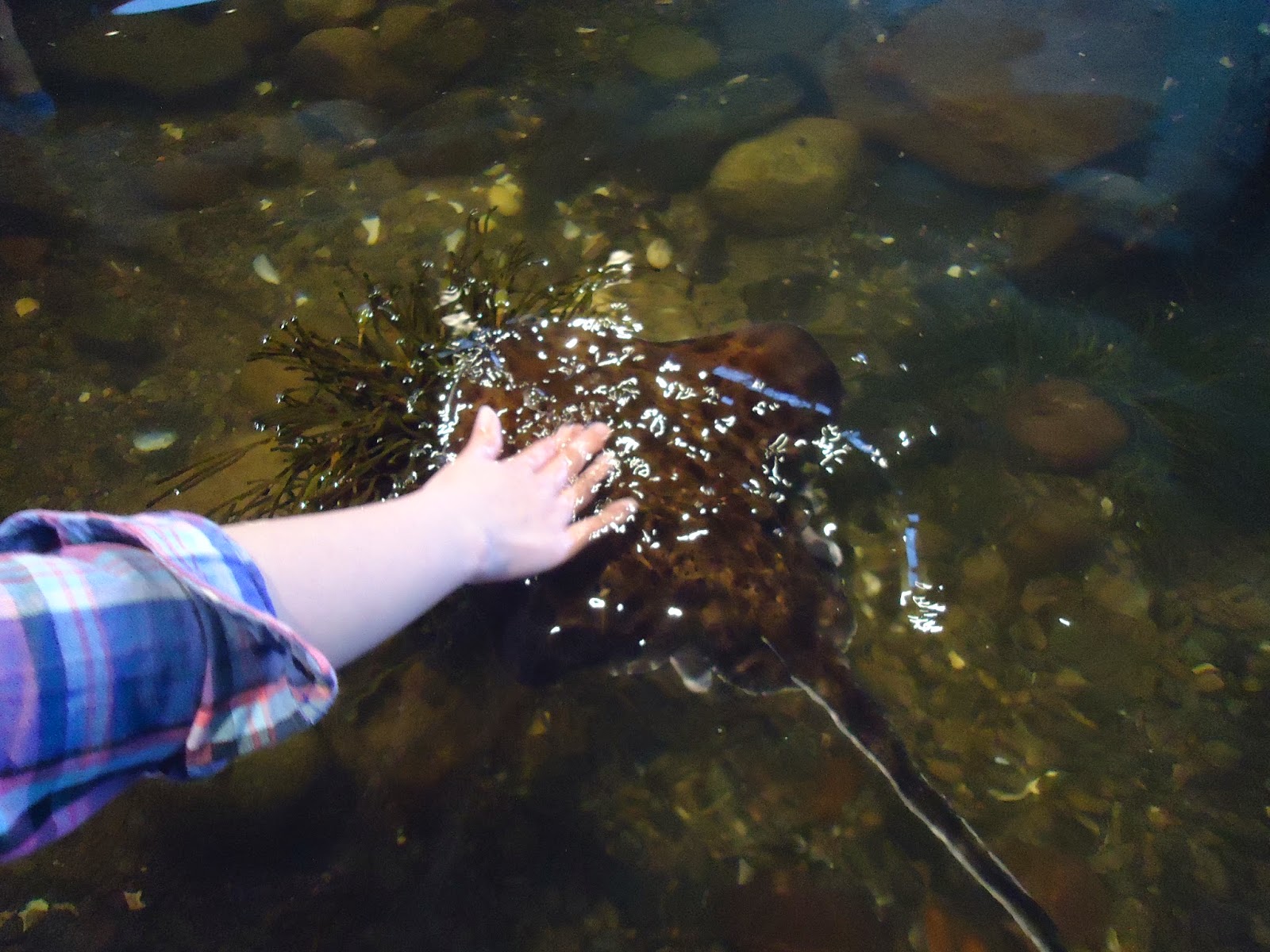We finished the morning with a hands-on lab classifying local marine invertebrates, such as hermit crabs, sea peaches, sponges, and brittle stars. Drawing a live animal sure can be challenging!
After a yummy lunch we gathered in the labs to study the anatomy of two echinoderms, the common sea star and the green sea urchin. We were able to use the microscopes to look at some of the smaller structures of the animals, such as the madreporite and the pedicellaria. The students were quite amazed to see the animals moving and in the case of the sea urchins, pooping!
As the tide went out in the afternoon we headed across town to Indian Point. Here the students were able to explore the intertidal zone and search of the animals that live in this area. We found green crabs, sea vases, periwinkles, sideswimmers and more. The students also learned that rubber boots are only waterproof to the top!
In the evening the students joined us in the lab to conduct a behaviour lab with the sea stars and urchins. We timed the animals to see which species was faster itself right side up. The sea stars were the winners!
Checking out the skates.
Look at how many eyes the scallop has...wow!
Snorkel and Loki, the harbour seals.
Drawing in the classification lab.
Learning to use the field guides to identify the animals.
Having a closer look at a sea urchin.
Beautiful view of the sea urchin mouth.
Drawing and labelling the structures of the echinoderms.
Exploring the intertidal zone.
Sea vases.
Beautiful fish eggs.
Lots of sea stars under this rock.
Flexible sea star turning right side up.
Getting ready to test the urchin's ability to turn itself right side up.





















































